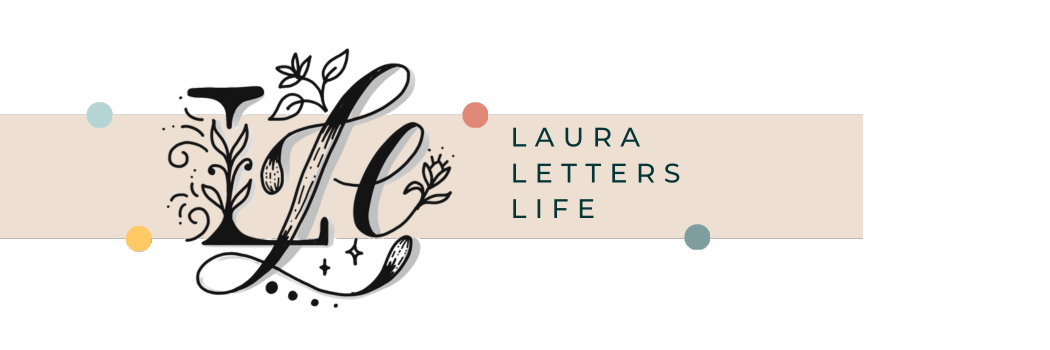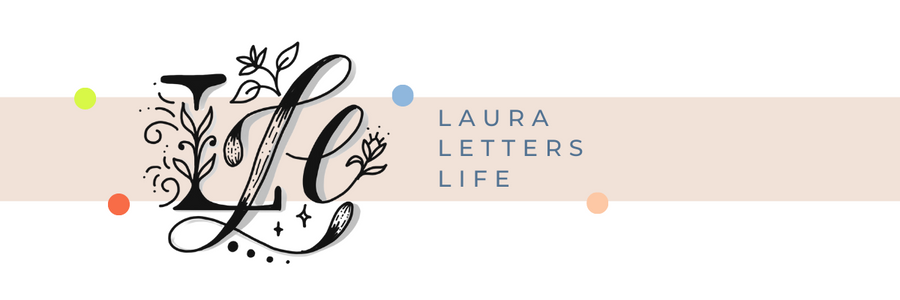Create ten minutes of calm everyday in three easy steps
These days the idea of doing anything creative often sounds like a luxury, the list of to-dos appears to grow spontaneously and then the realisation that we’re not creative anyway pops into our mind. And that’s that, we’ve pretty much convinced ourselves not to spend anytime away from our desk, home or kids.
So how do I channel my inner calm when I’m working from home, feeding a family, and my two young boys are bouncing off the walls (especially during the holidays!), learning to understand each other one moment and cope with the ever changing world the next? With a pen.
Keep it simple
No paints, no easels, no glue, or sewing machines - my patience is thin enough - but at the end of the day reaching for a pencil or pen a notebook or scrap of paper, and creating a word or phrase in a beautiful lettering style is just the ticket.
I can instantly begin to feel my stress of the day fall away. I can feel my breathing getting deeper and slower and my focus on this single line brings me into a state of flow. In fact, when I struggled with anxiety and stress a few years ago, I found myself on a calligraphy course which changed my life.
I’m so passionate about sharing this with others that I now run calligraphy and lettering workshops and courses to boost your wellbeing showing people exactly how to start this lovely practice and use it to create calm and connect with themselves, and with others.
1. Get your set up, set up
I always find with children the best time to practice is once they’re in bed, but you could do this anytime of day. I boil the kettle for a cup of green tea and set up the kitchen table with some paper, a pencil and a pen - you could use a biro, sharpie or even a brush pen if you have one. I might even light a candle if I’m feeling crazy.
2. Make your mark
Often we talk ourselves out of doing something when we don’t know what to actually do. That’s often where overwhelm, self doubt can set in. But with lettering there are some lovely easy to start drills which I kick off with in my workshops and own practice. Here’s what they look like…
Find my free downloadable sheets here.
The key principles here are:
to be open and kind, this isn’t a masterpiece
loosen your grip and your hand/arm muscles
remember to breathe
and go slow. Slower…even slowwwerr.
3. Find your flow
Once we’ve opened our practice with a few drills to connect our head to hand to pen to paper…we can then have some real fun with letterforms, words and phrases. Your hand and head are usually working well together by this point, even just a few minutes in.
These can be something super simple with a pencil like this:
A little more complex like this:
Or with some flourishing and extra elements to create a fuller design:
Have some fun trying things out, with whatever you have to hand. Let go of any pressure to be perfect…oh and go slowwww.
And within ten minutes, our minds can often feel clearer, more relaxed and bring some calm to our busy days. I say ten minutes, but I would imagine if you’ve found your flow, you’ll be flying through a good hour of creativity at least (and possibly Googling “new pens”, “how to hand letter”, “learn calligraphy”, sorry!).
Save your search and join a workshop with me.
Gimmie some science…
In my workshops this where people are really “in flow” and time flies by. This triggers Alpha brain waves dropping us into a state of wakeful relaxation - a space we rarely visit during the day or night. We are driven by different types of brain waves, with a single one often dominating at any one time. The majority of our day Beta brain waves are in full stride putting us in a state of ‘doing’, alert and focussed. Then at night we trigger Theta and Delta brain waves as we sleep, depending on when we’re sleeping deeply or lightly.
Research indicates that some people who have depression may have an imbalance of alpha waves, with more of them occurring in an area of the brain called the left frontal cortex. - Healthline
You can also increase alpha brain waves with meditation and mindfulness, which is great to incorporate into your lettering practice, especially if you can set aside at least ten minutes everyday.
Check out the upcoming workshops I’m running here.
Here’s what some of my attendees have noticed:
“I find the lettering so calming and peaceful. Laura guides the workshops, but leaves space for people to go at their own pace. I feel connected with the group, but never preoccupied about comparing myself to others. I've discovered an outlet for my creativity, and it's as easy as picking up a pen.” - Adelaide Harris, Regular Workshop Attendee
“As someone who find it hard to switch off from all of the demands of working full time and being a single parent, I was surprised to find that I felt connected to the present moment and felt less stressed after the class too. Also, I felt such satisfaction having created something beautiful during the class and I felt inspired to take up the practice to help me unwind…” - Pippa Hastings
“Doing Calligraphy and Lettering helps slow my mind and reduce my stress and anxiety caused by work and its pressures. I will happily sit down for hours in the evening lettering random words and quotes with the only aim being to calm my mind and allow me to relax. It never fails to amaze me how much time can pass once I start lettering.” - Simon Moore
For more ideas, freebies and updates become a Lettering Life Insider.







